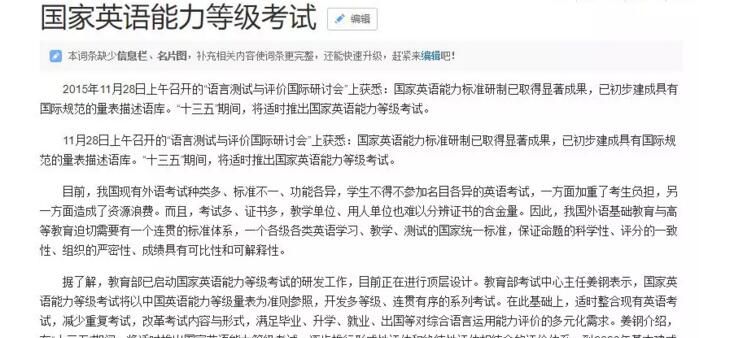LSAT考试全真试题四SECTION3(4)
|
16. K, a research scientist, was accused of having falsified laboratory data. Although the original data in question have disappeared, data from K s more recent experiments have been examined and clearly none of them were falsified. Therefore, the accusation should be dismissed. Which one of the following contains questionable reasoning that is most similar to that in the argument above? (A) L, an accountant, was charged with having embezzled funds from a client. The charge should be ignored, however, because although the records that might reveal this embezzlement have been destroyed, records of L s current clients show clearly that there has never been any embezzlement from them. (B) M, a factory supervisor, was accused of failing to enforce safety standards. This accusation should be discussed because although the identity of the accuser was not revealed, a survey of factory personnel revealed that some violations of the standards have occurred. (C) N, a social scientist, was charged with plagiarism. The charge is without foundation because although strong similarities between N s book and the work of another scholar have been discovered, the other scholar s work was written after N s work was published. (D) O, an auto mechanic has been accused of selling stolen auto parts The accusation seems to be justified since although no evidence links O directly to these sales, the pattern of distribution of the auto parts points to O as the source. (E) P, a politician, has been accused of failing to protect the public interest. From at least some points of view, however, the accusation will undoubtedly be considered false, because there is clearly disagreement about where the public interest lies. Questions 17-18 The widespread staff reductions in a certain region s economy are said to be causing people who still have their jobs to cut back on new purchases as though they, too, had become economically distressed. Clearly, however, actual spending by such people is undiminished, because there has been no unusual increase in the amount of money held by those people in savings accounts. 17. The argument in the passage proceeds by doing which one of the following? (A) concluding that since an expected consequence of a supposed development did not take place (B) concluding that since only one of the two predictable consequences of a certain kind of behavior is observed to occur this observed occurrence cannot, in the current situation, be a consequence of such behavior (C) arguing that since people s economic behavior is guided by economic self-interest only misinformation or error will cause people to engage in economic behavior that harms them economically (D) arguing that since two alternative developments exhaust all the plausible possibilities one of those developments occurred and the other did not (E) concluding that since the evidence concerning a supposed change is ambiguous, it is most likely that no change is actually taking place. 18. Which one of the following is an assumption on which the argument relies? (A) If people in the region who continue to be employed have debts, they are not now paying them off at an accelerated rate (B) People in the region who continue to be employed and who have relatives who have lost their jobs commonly assist those relatives financially (C) If people in the region who have lost jobs get new jobs, the new jobs generally pay less well than the ones they lost . (D) People in the region who continue to be employeda are pessimistic about their prospects for increasing their incomes (E) There exist no statistics about sales of goods in the region as a whole 19. Every student who walks to school goes home for lunch. It follows that some students who have part-time jobs do not walk to school. The conclusion of the argument follows logically if which one of the following is assumed? (A) Some students who do not have part-time jobs go home for lunch (B) Every student who goes home for lunch has a part-time job. (C) Some students who do not have part-time jobs do not go home for lunch. (D) Some students who do not go home for lunch have part-time jobs. (E) Every student who goes home for lunch walks to school. 20. When the Pinecrest Animal Shelter, a charitable organization, was in danger of closing because it could not pay for important repairs, its directors appealed to the townspeople to donate money that would be earmarked to pay for those repairs. Since more funds were ultimately donated than were used for the repairs the directors plan to donate the surplus funds to other animal shelters. But before doing so, the directors should obtain permission from those who made the donations Which one of the following priciples, if valid, most Helps to justify the position advocated aboved above and yet places the least restriction on the allocation of funds by directors of charitable organizations? (A) The directors of charitable organizations cannot allocate publicly solicited funds to any purposes for which the directors had not specifically carmarked the funds in advance (B) People who solicit charitable donations from the public for a specific cause should spend the funds only on that cause or, if that becomes impossible, should dispose of the funds according to the express wishes of the donors. (C) Directors of charitable organizations who solicit money from the public must return all the money is received than can practicably be used for the purposes specified in the appeal. (D) Donors of money to charitable organizations cannot delegate to the directors of those organizations the responsibility of allocating the funds received to various purposes consonant with the purposes of the organization as the directors of the organization see fit. (E) People who contribute money to charitalbe organizations should be considered to be placing their trust in the directors of those organizations to use the money wisely according to whatever circumstance might arise. |








